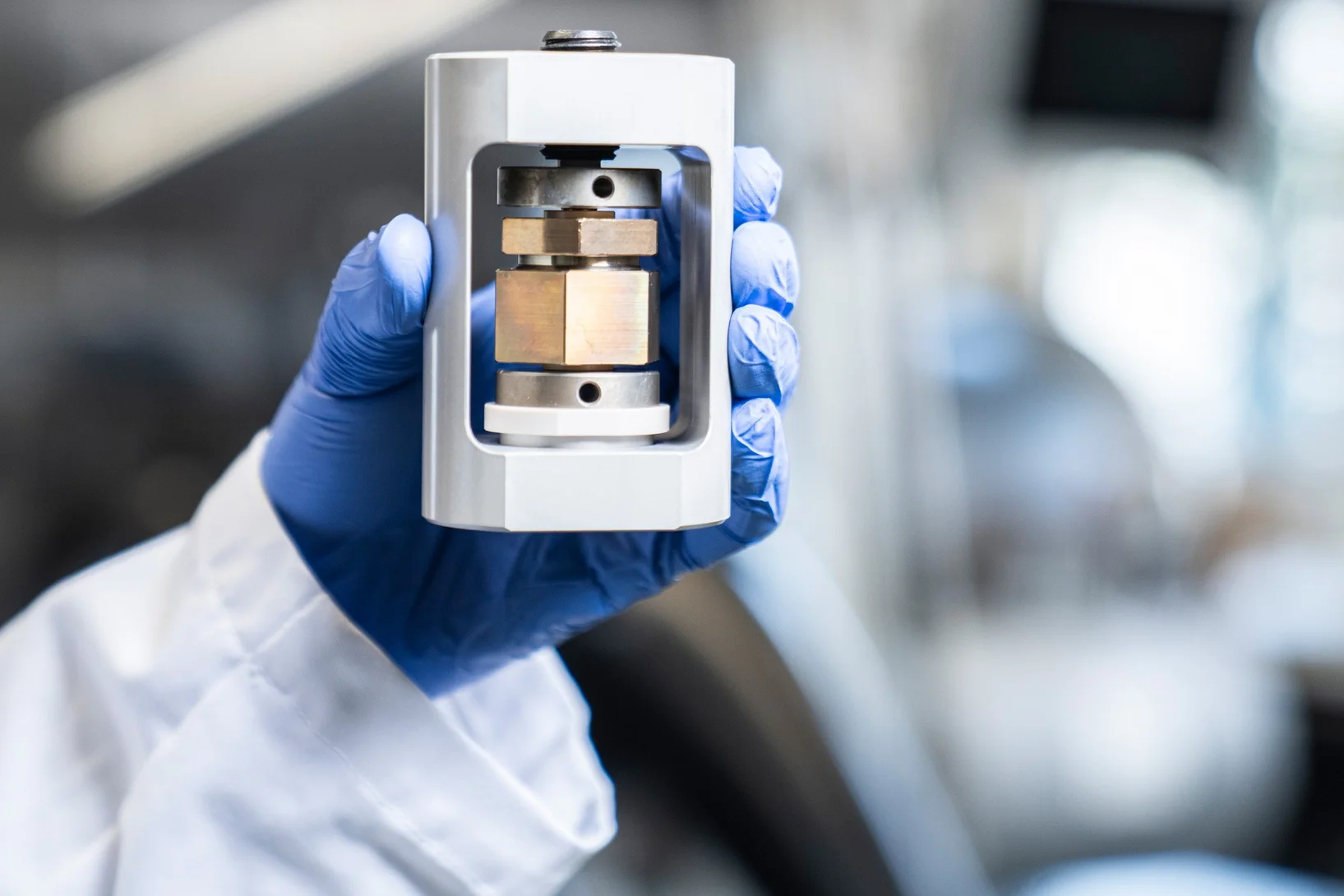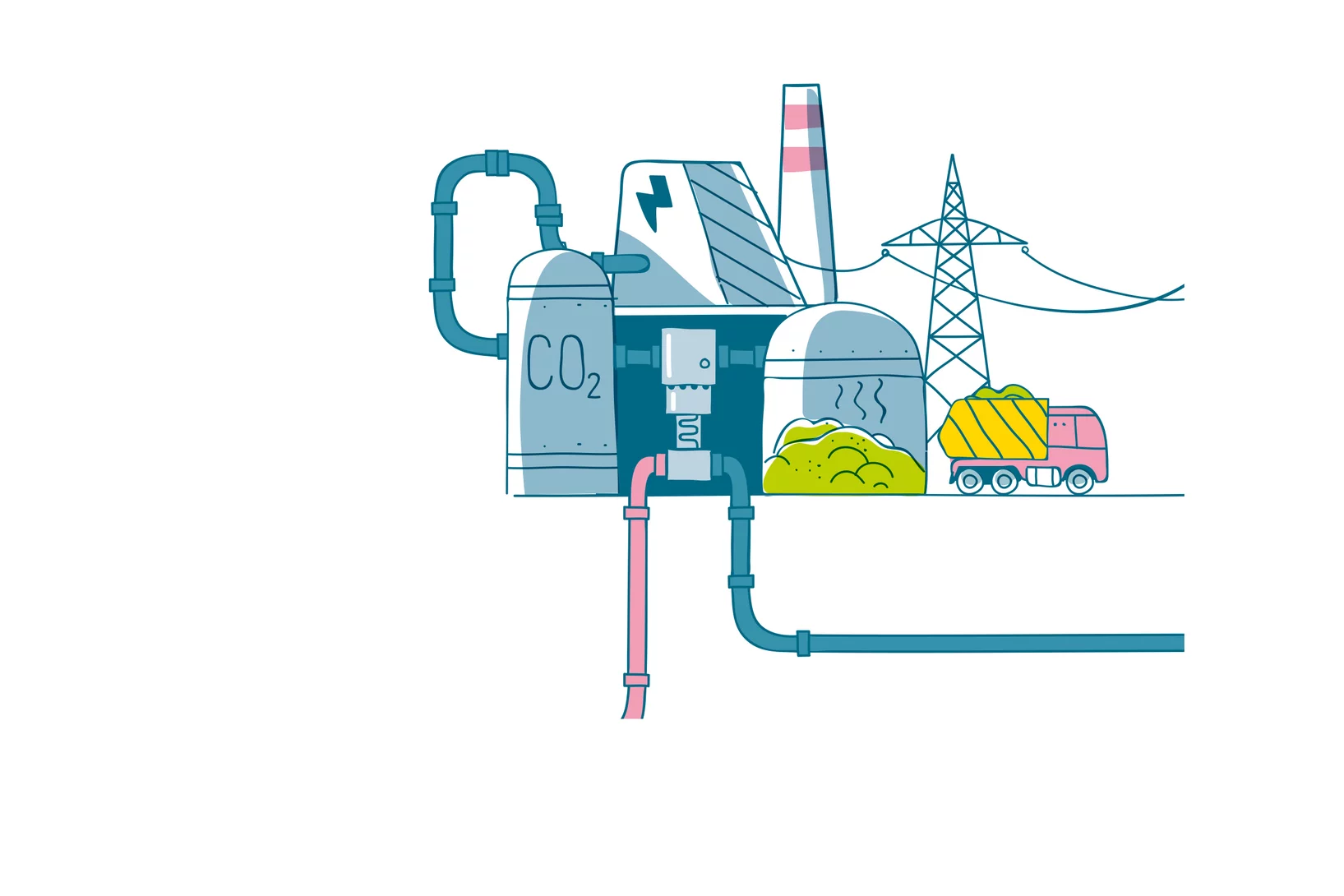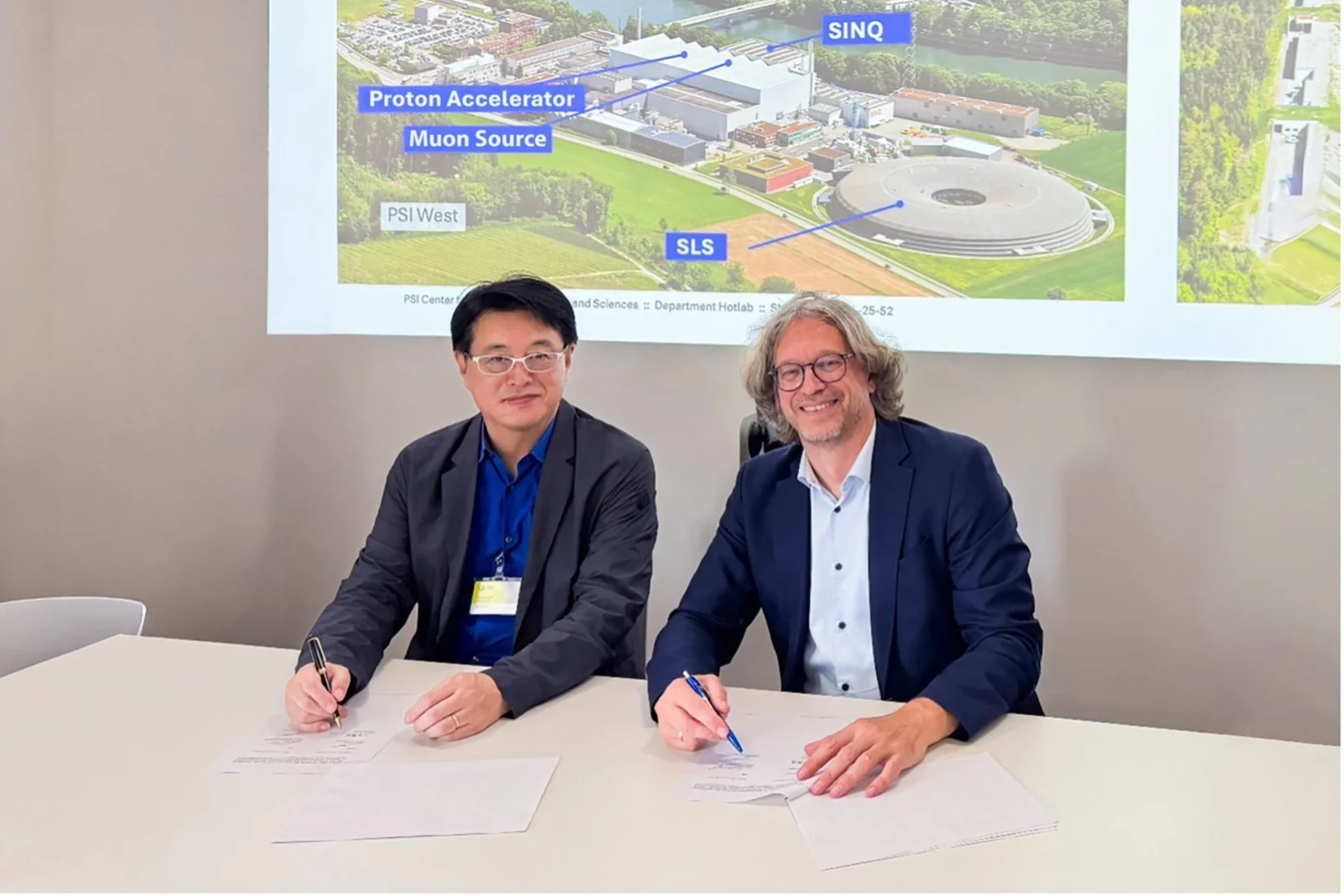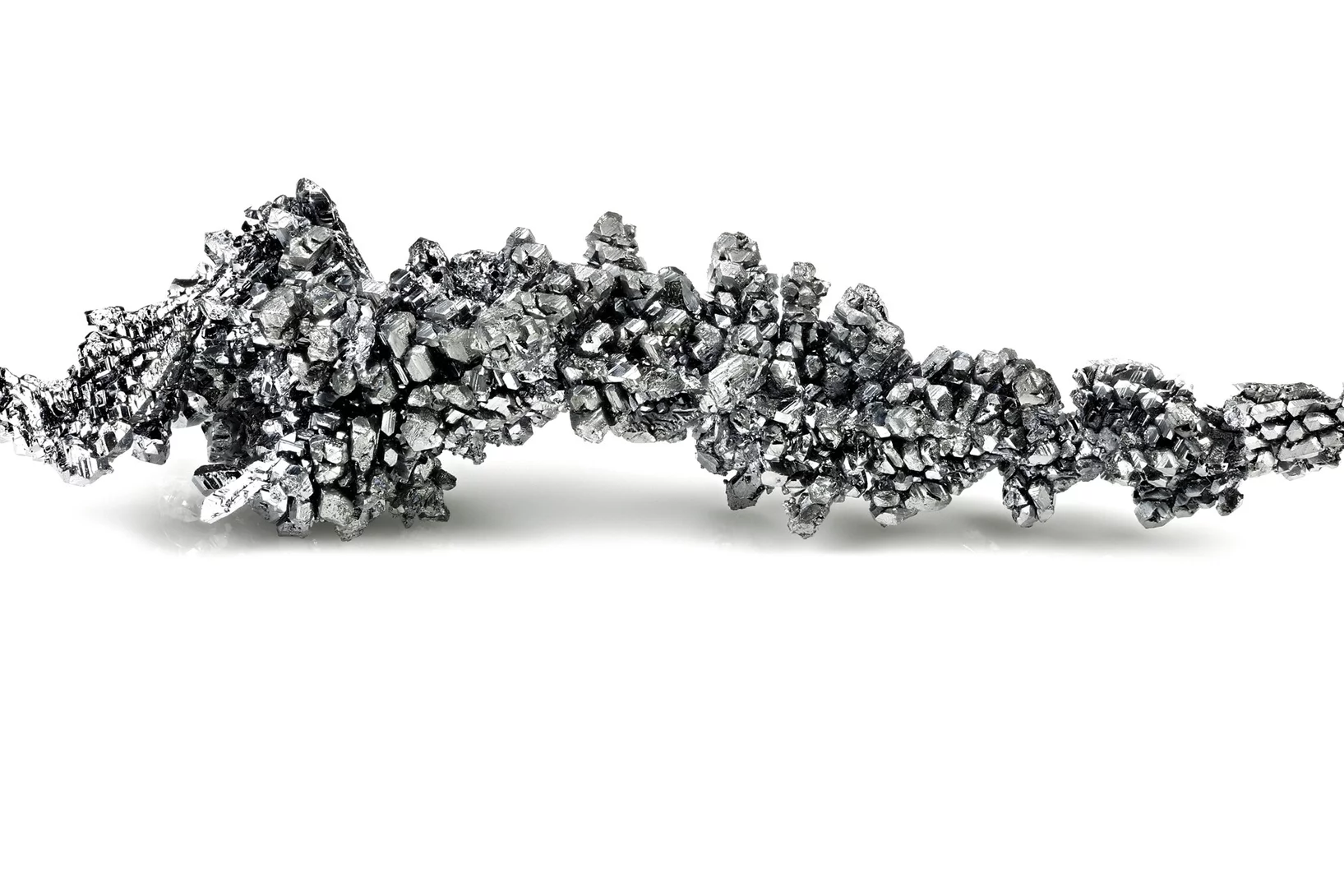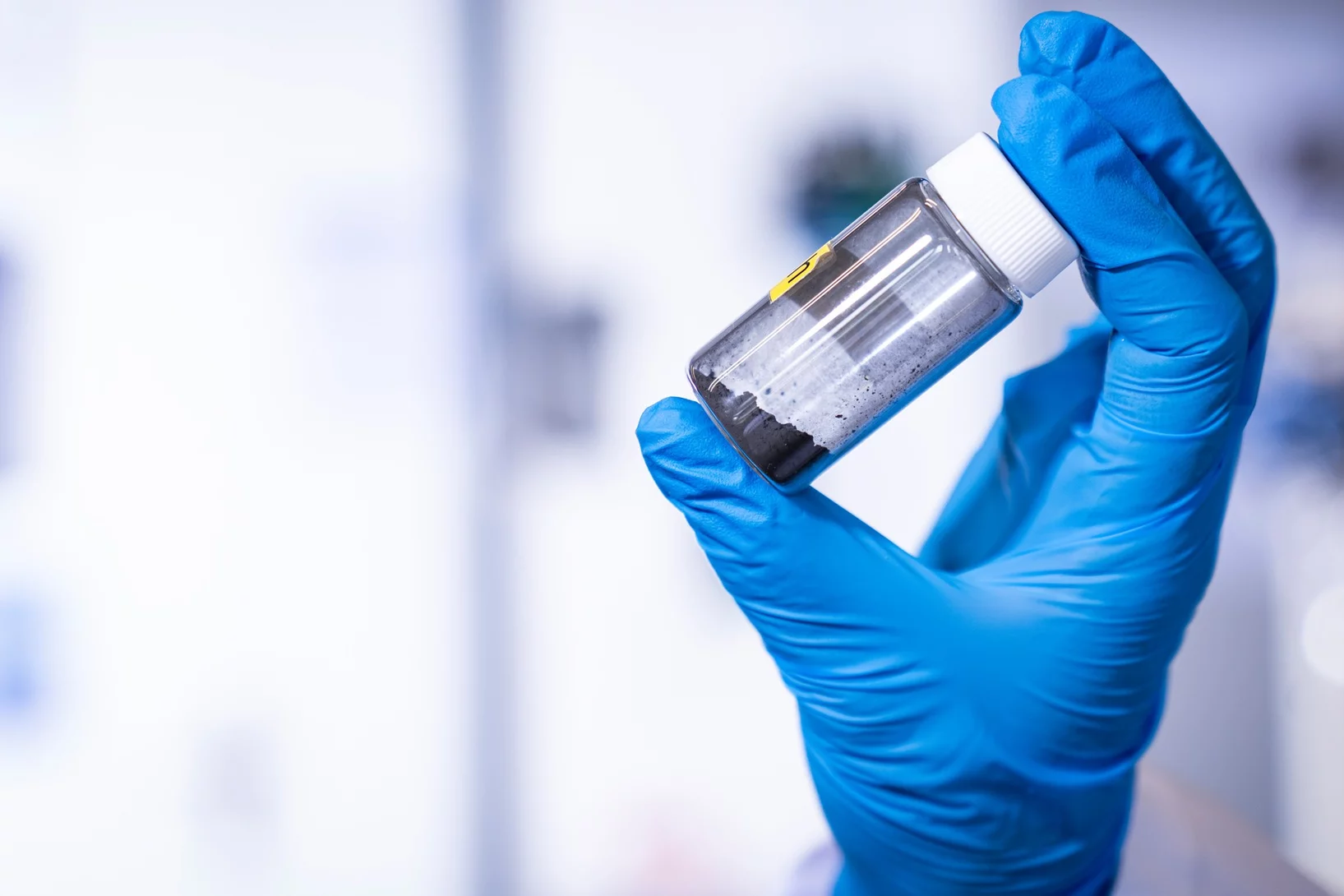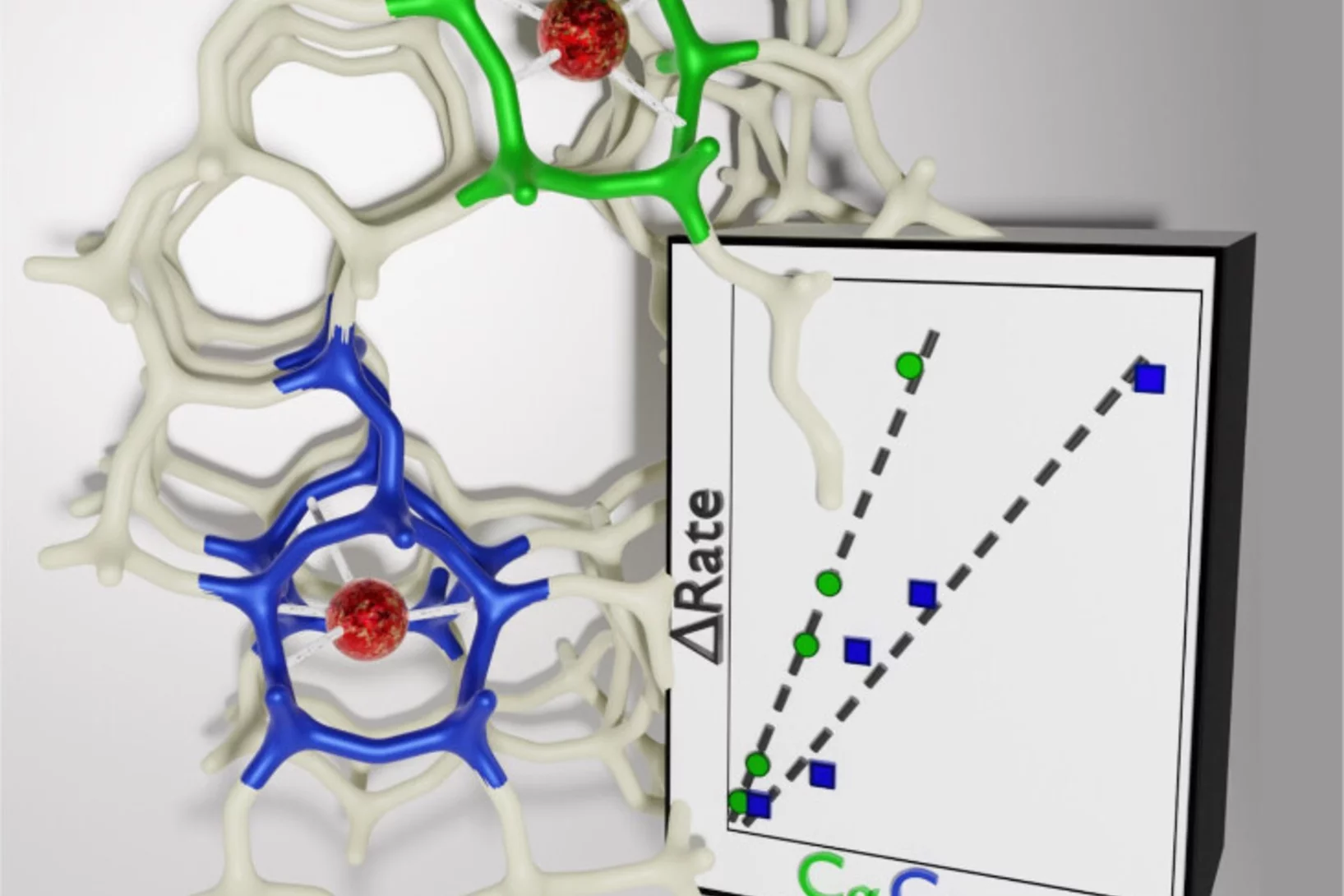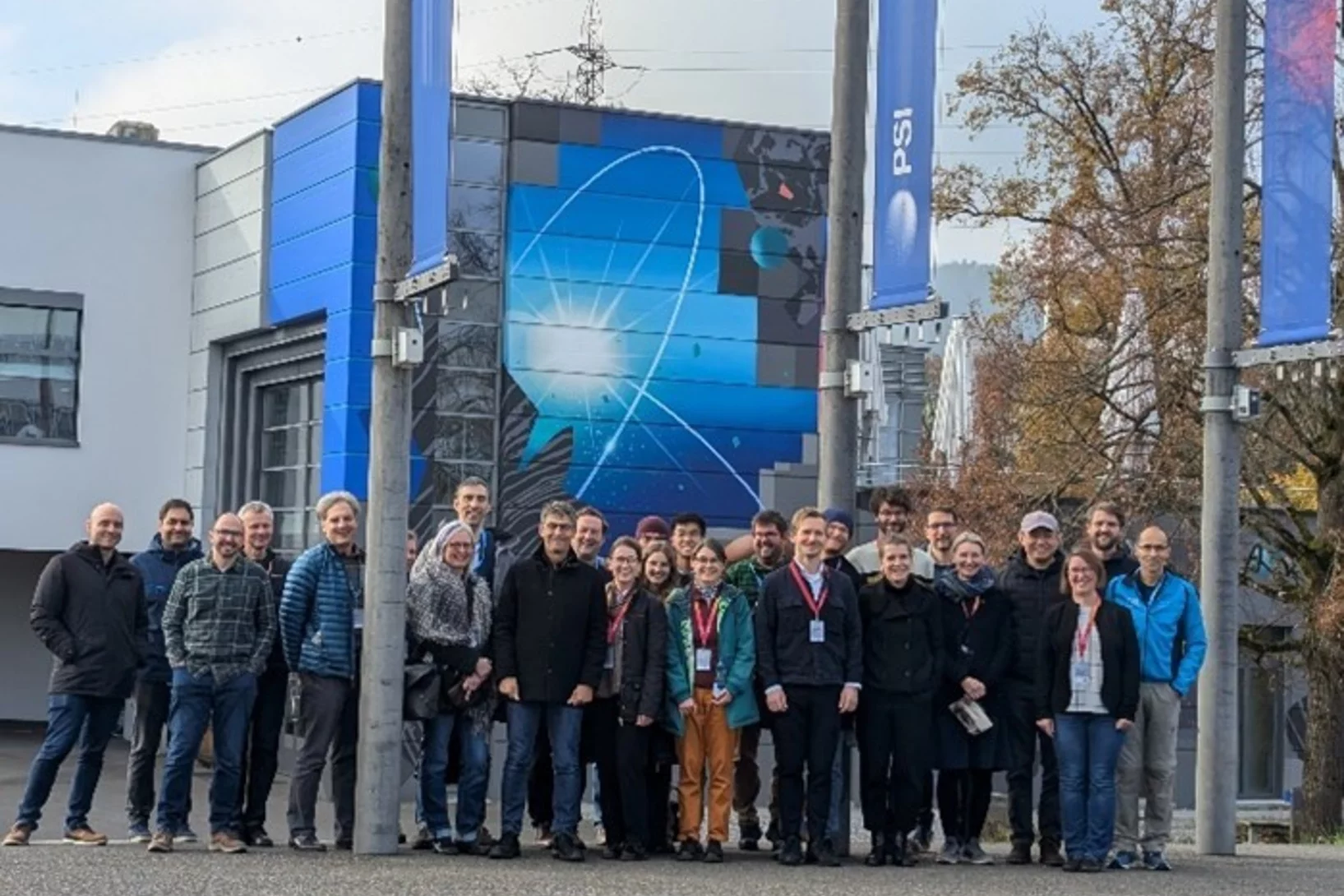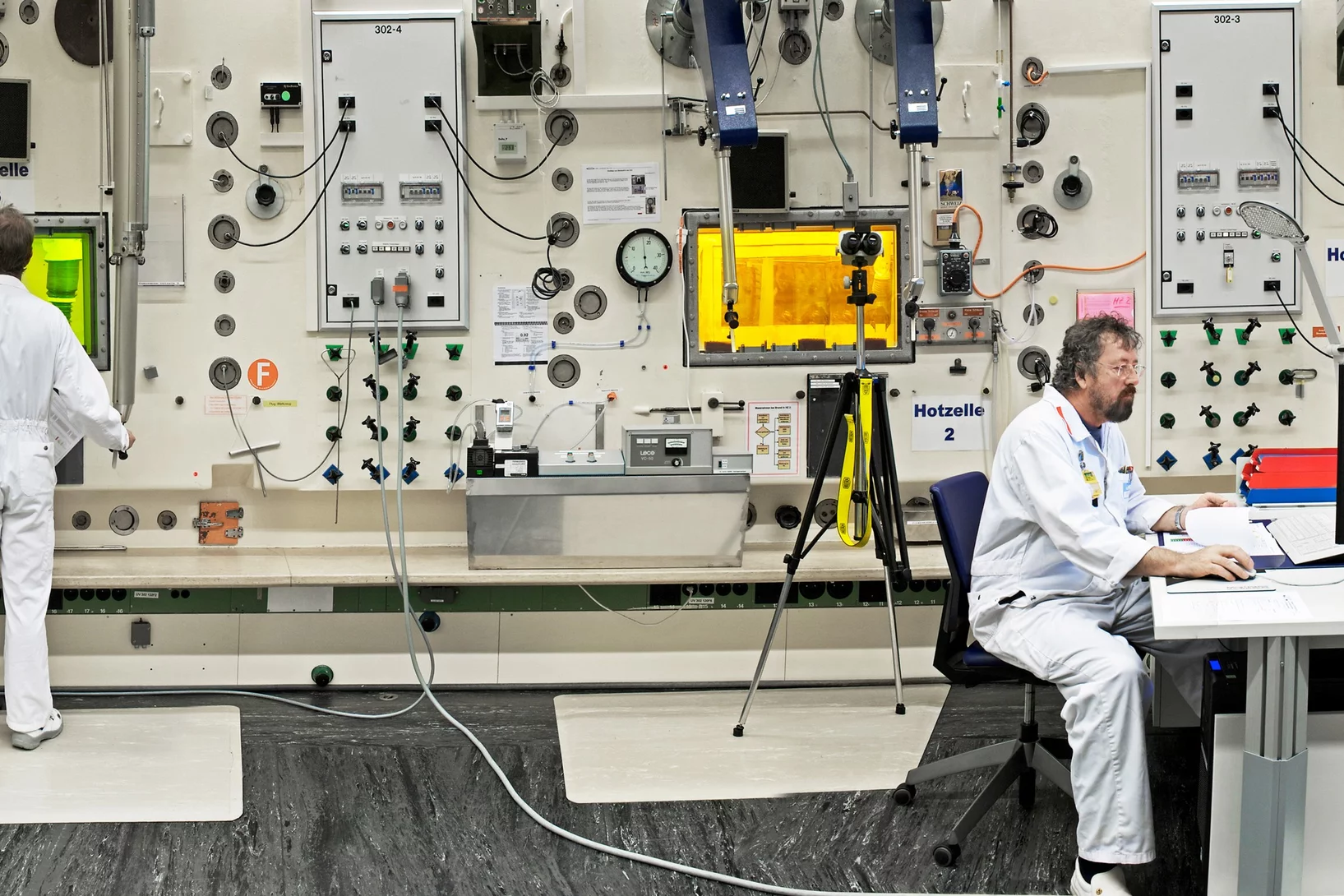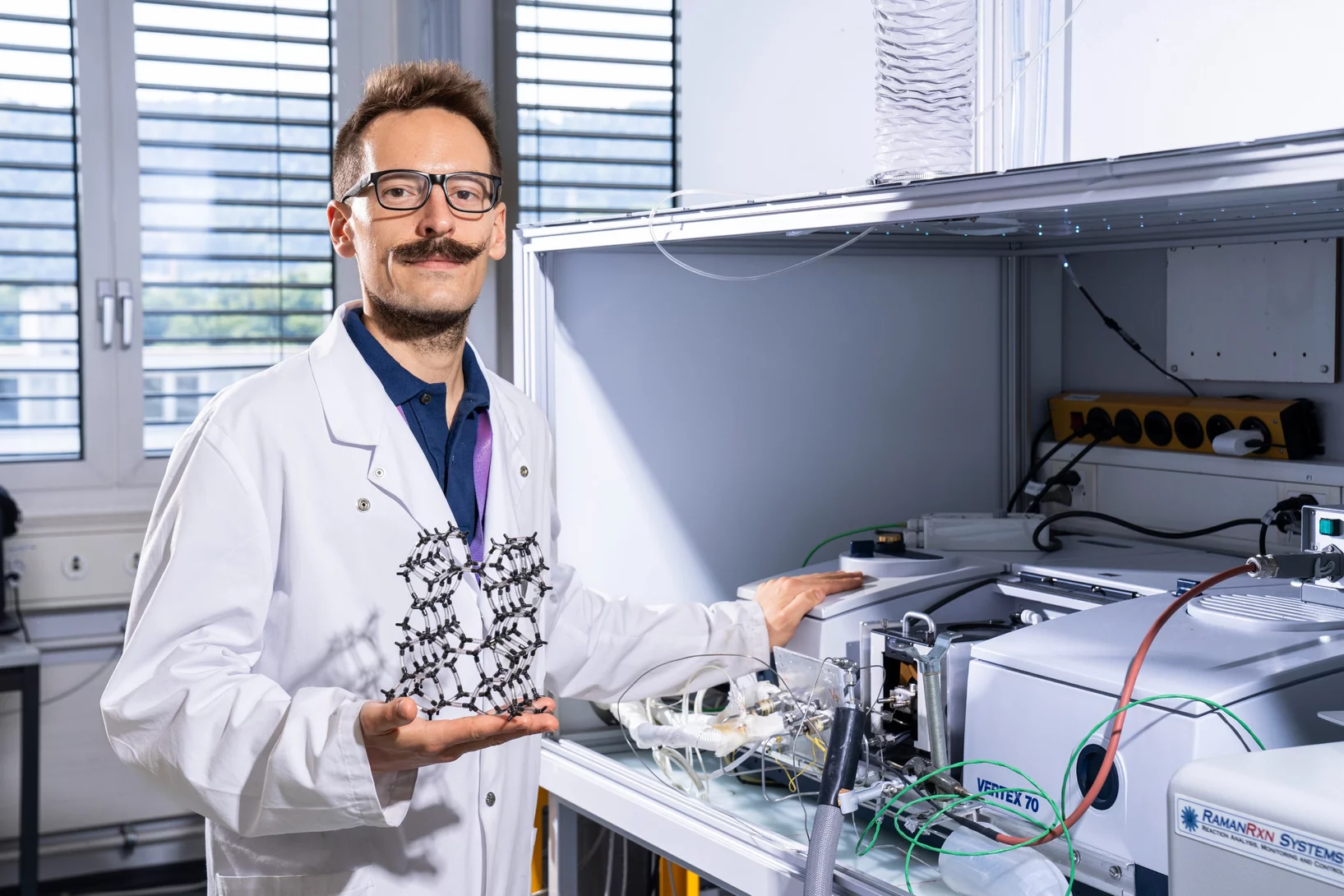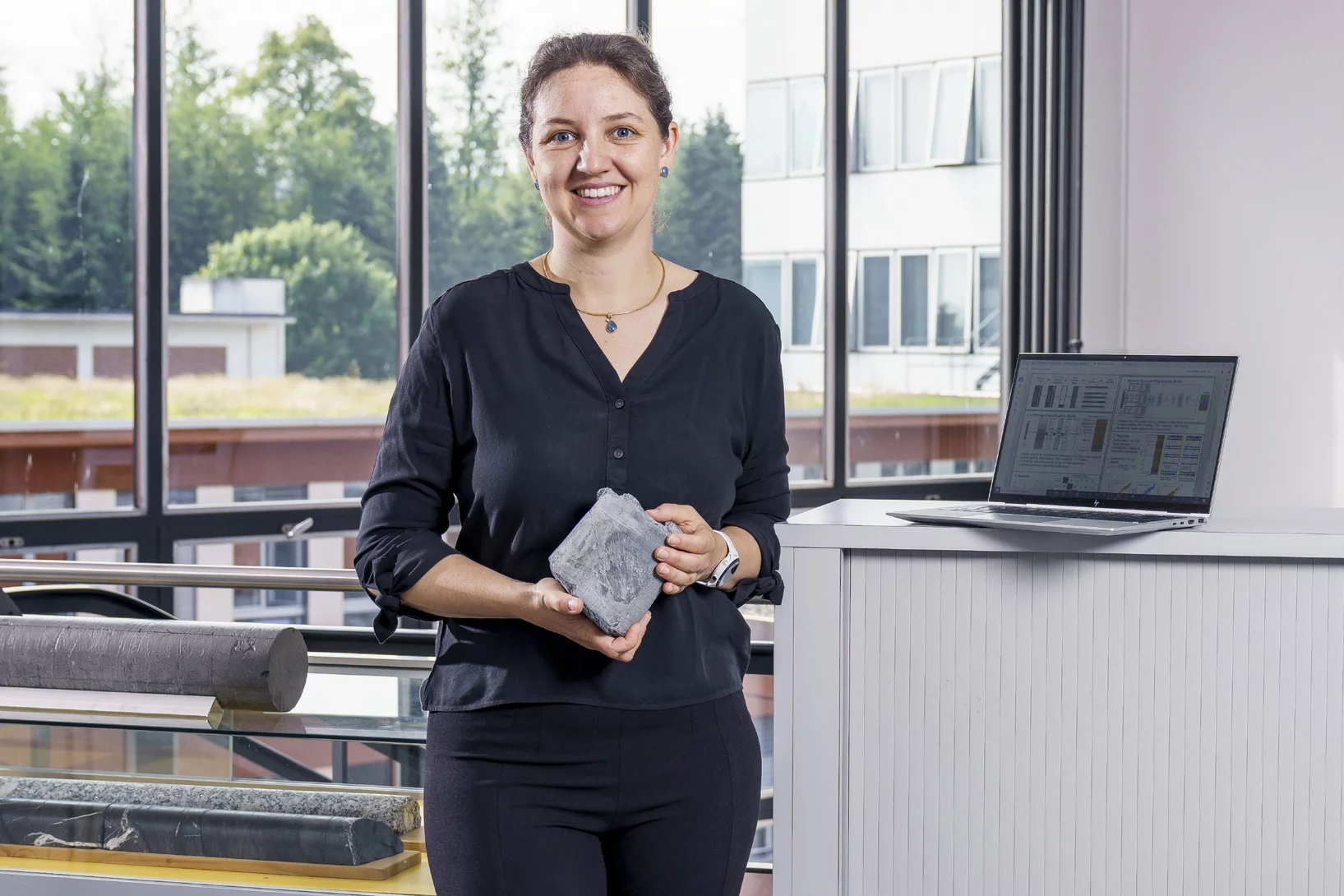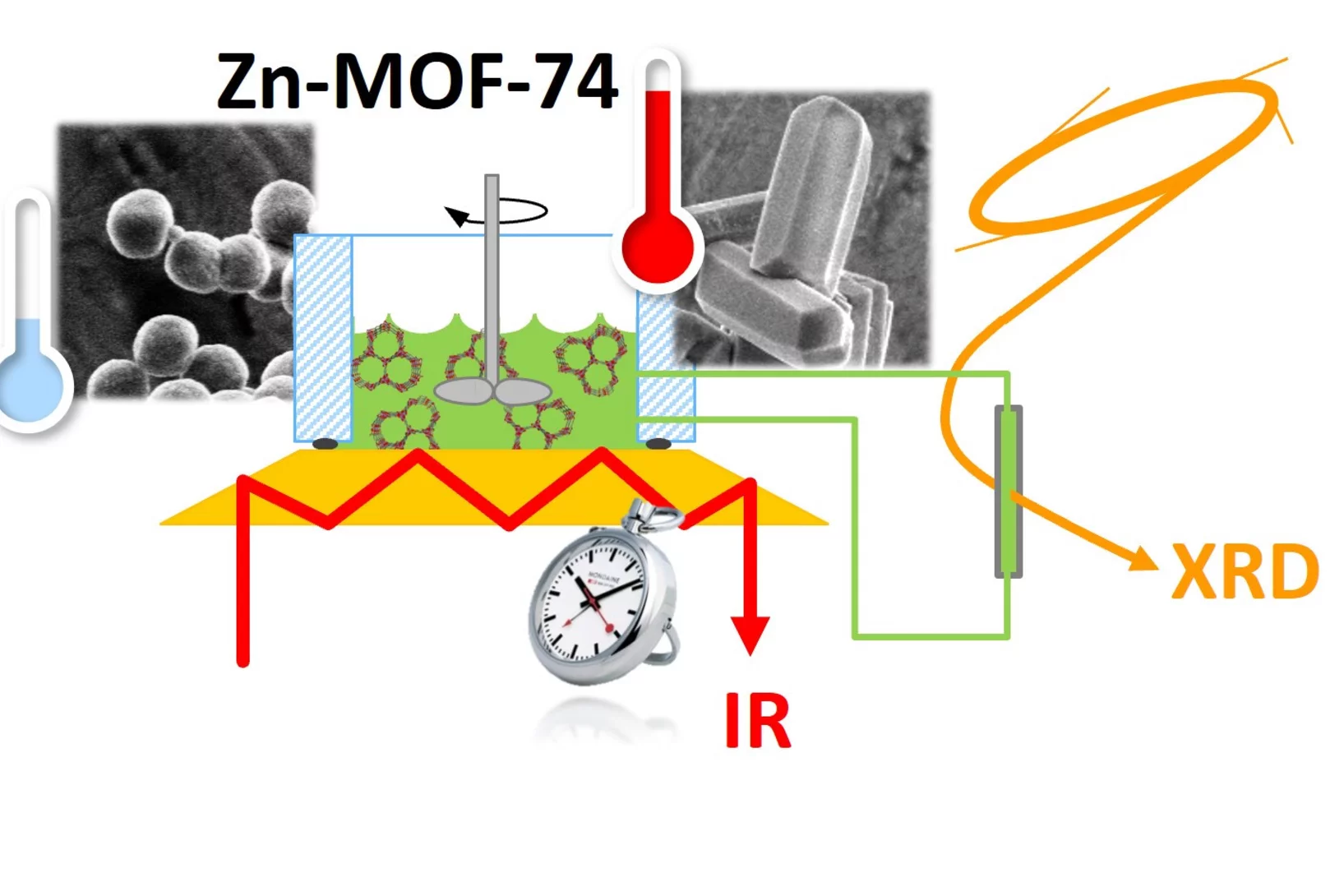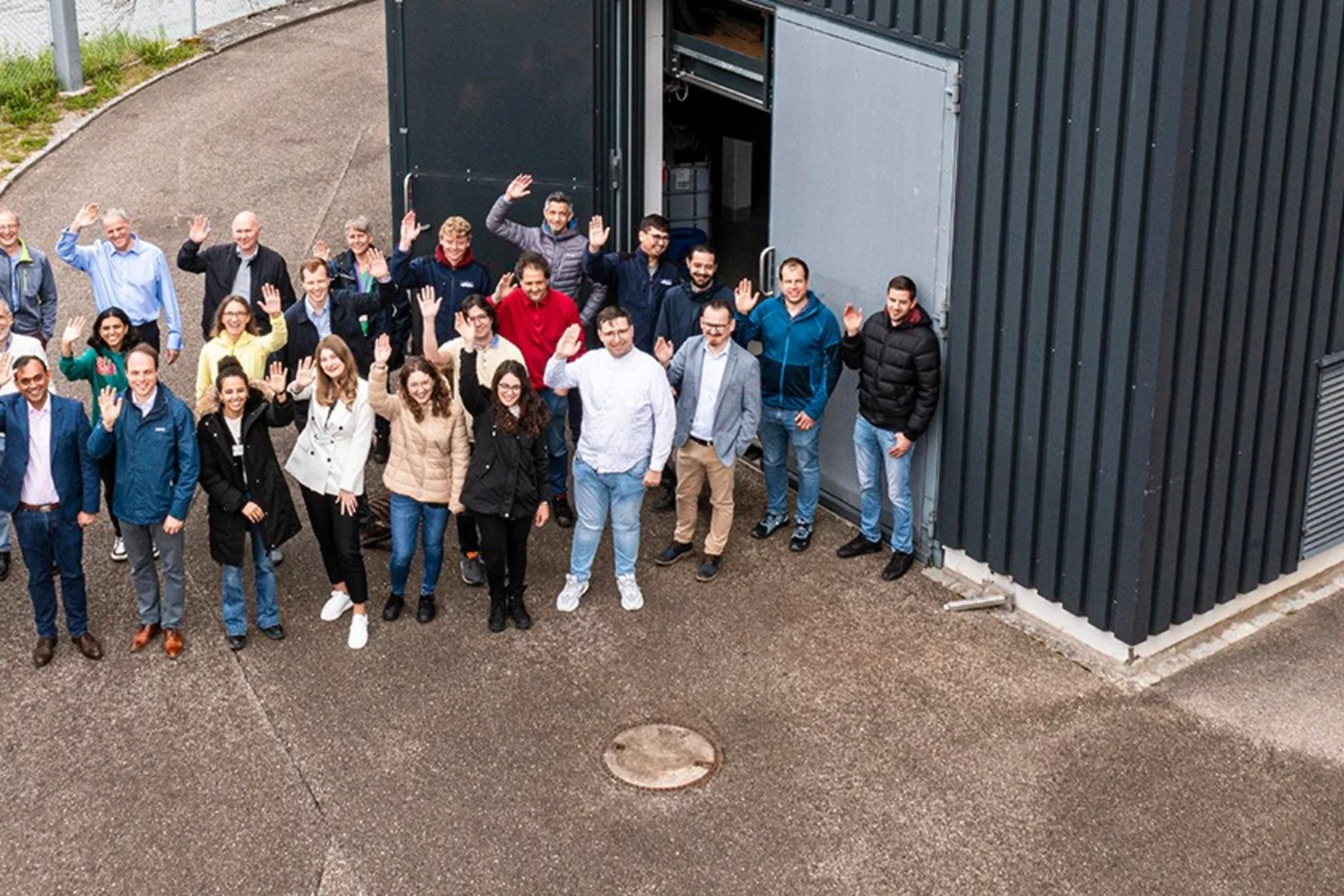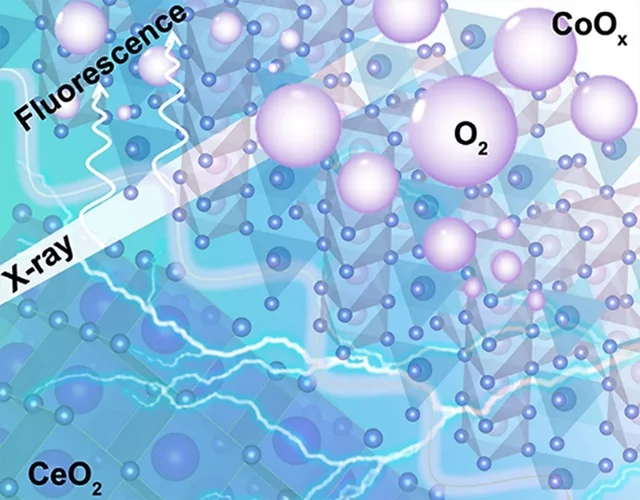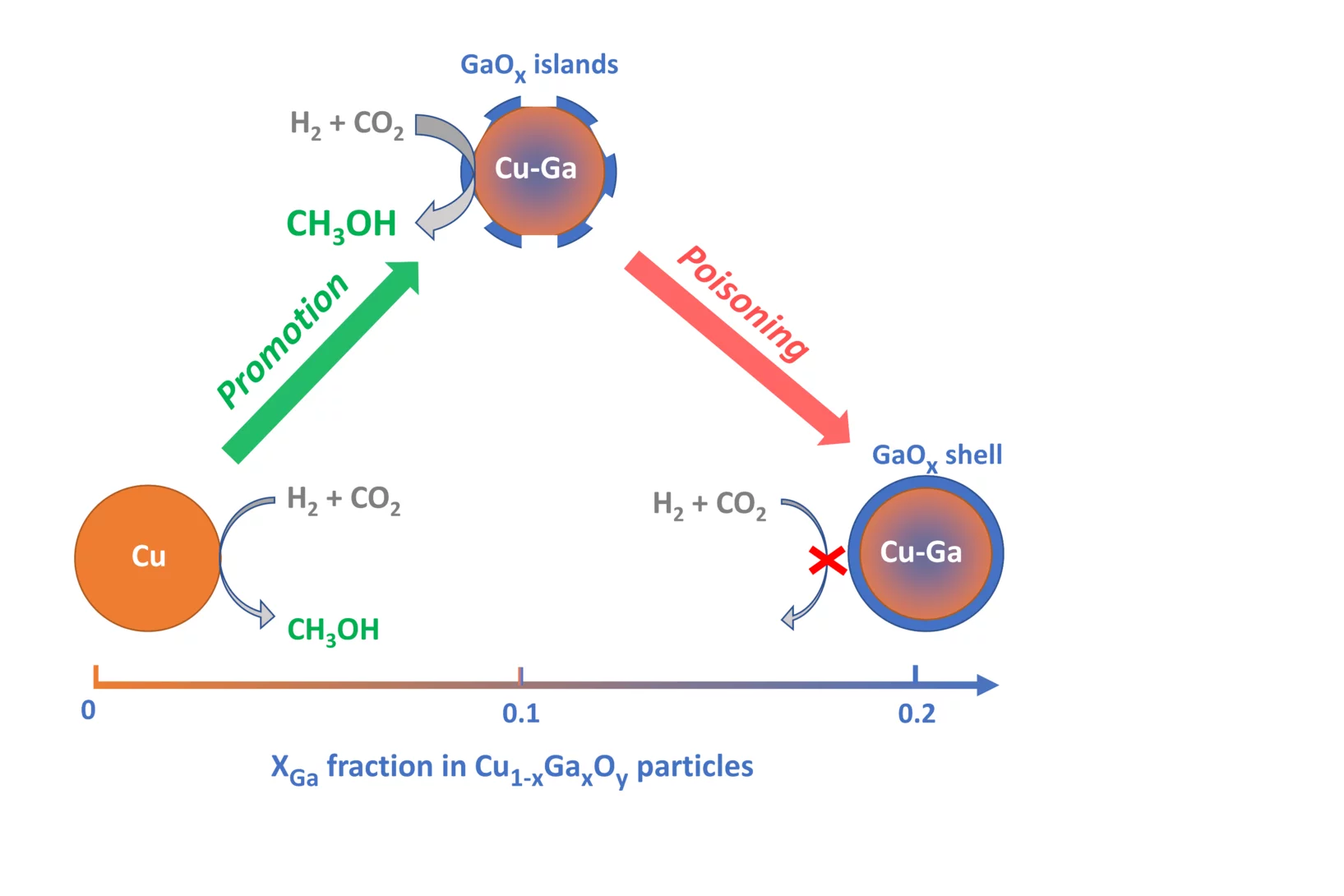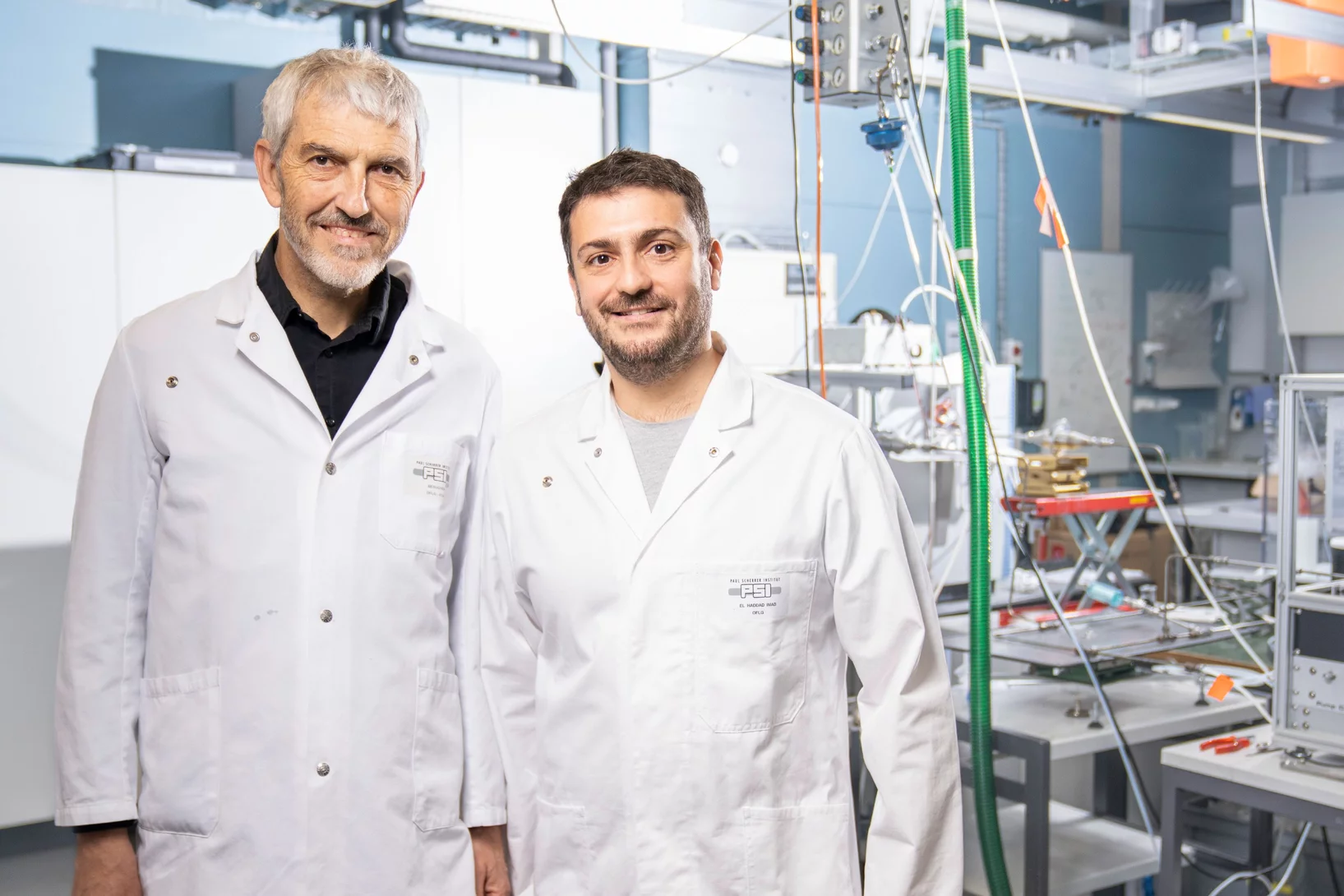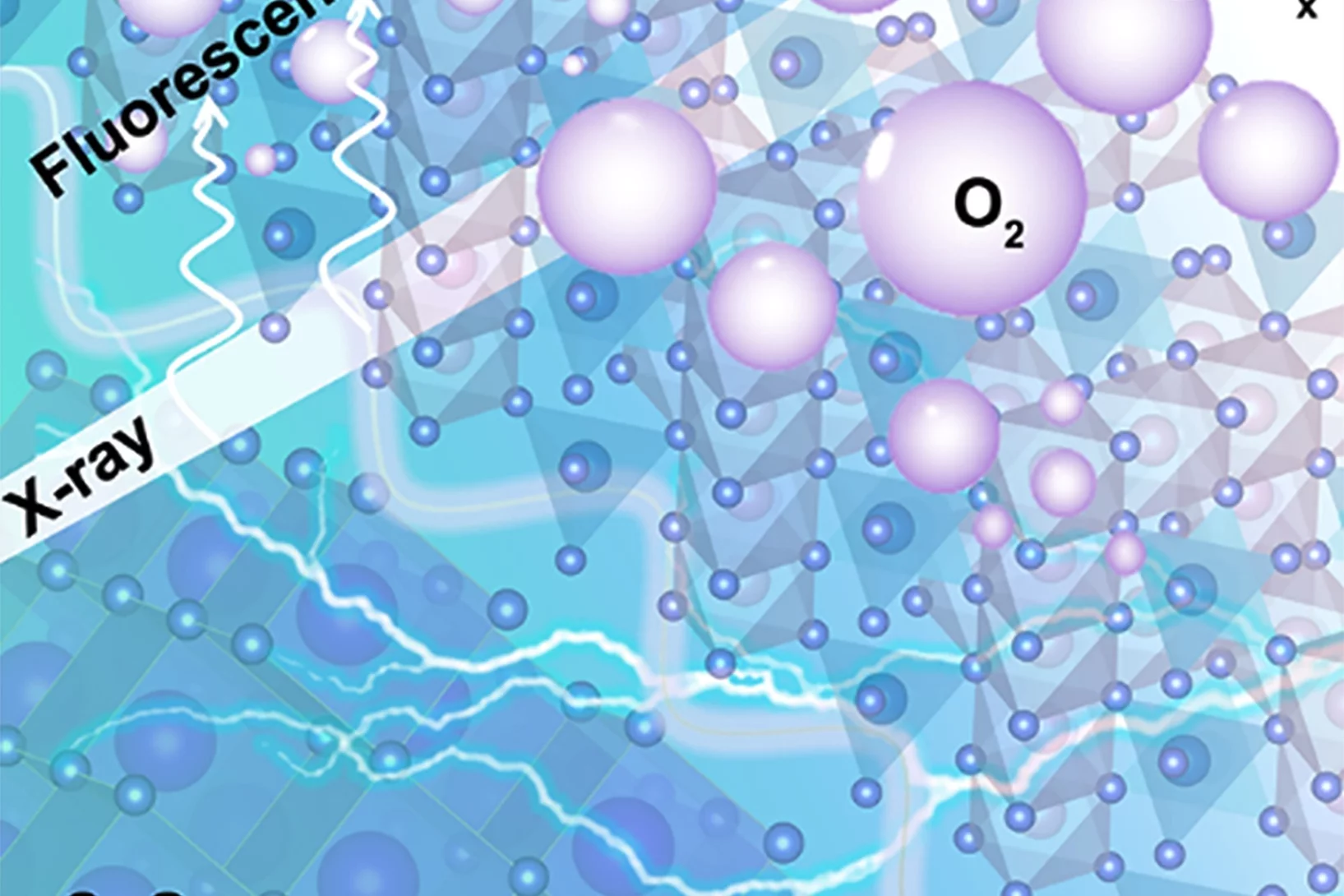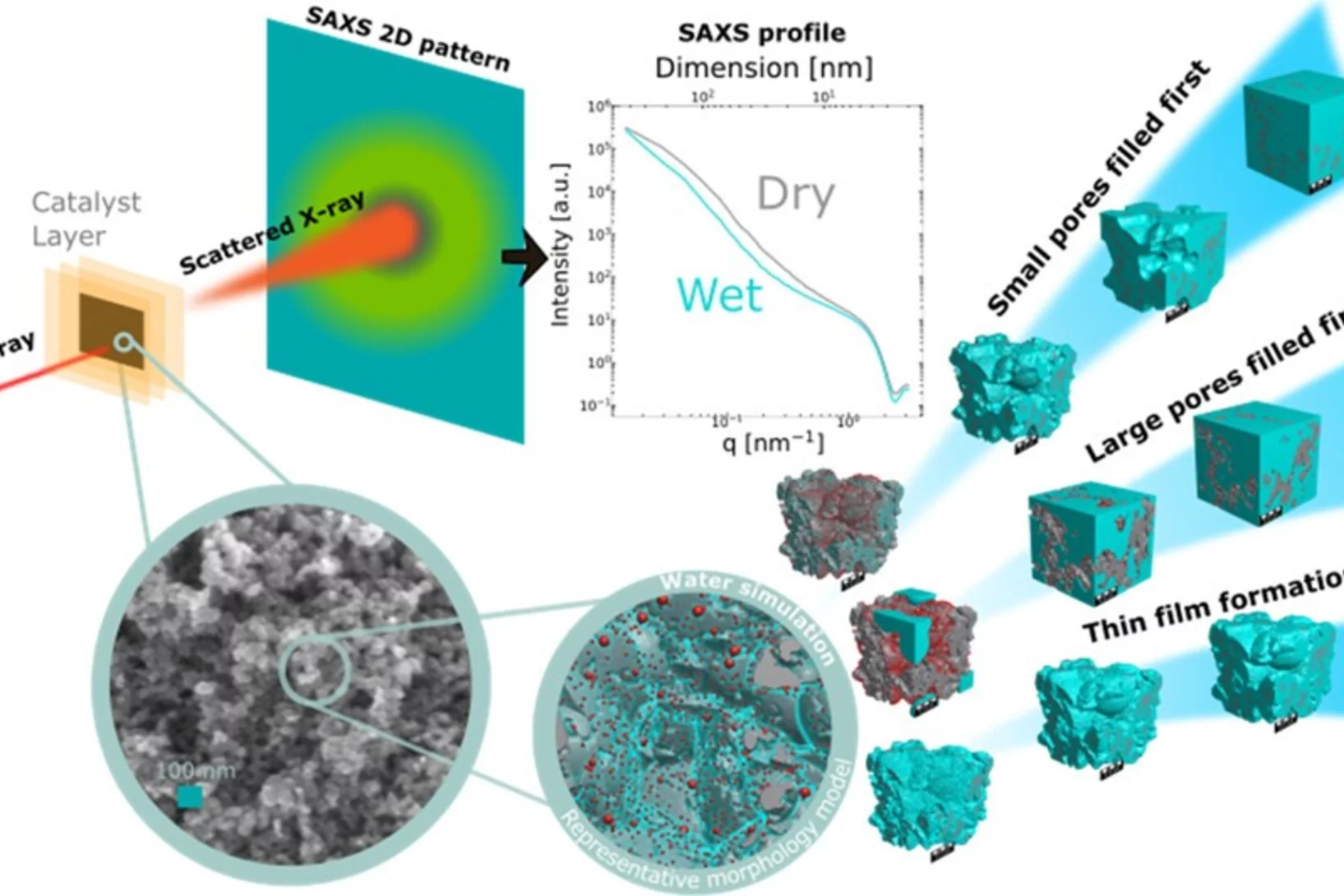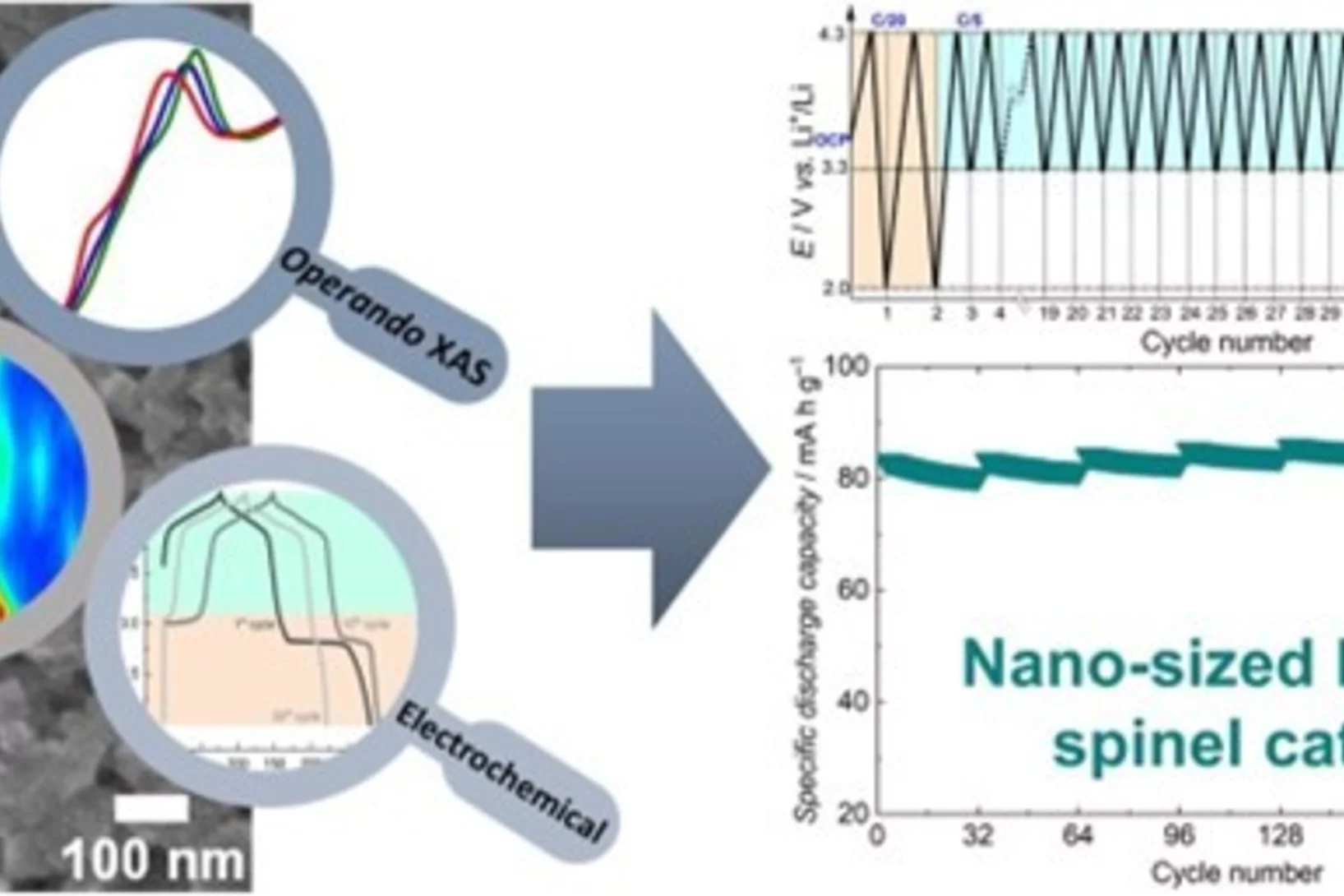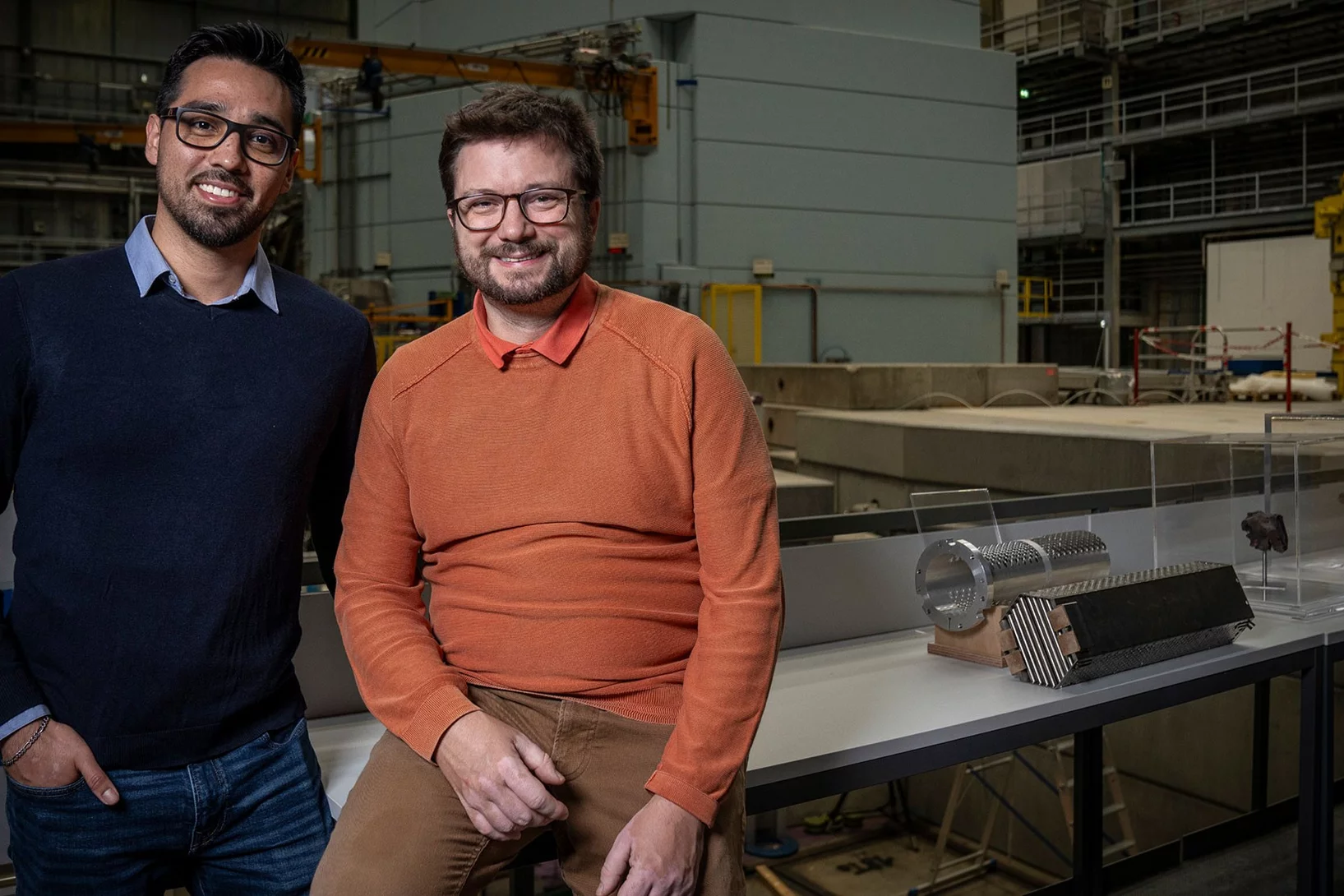Show filters
Neues Verfahren für stabile und langlebige Festkörperbatterien
PSI-Forschende haben ein neuartiges Verfahren entwickelt, das Festkörperbatterien widerstandsfähiger und langlebiger macht.
Sauberes Biogas – universell messbar
Eine neue Analysemethode erfasst selbst kleinste Mengen kritischer Verunreinigungen.
E-Autos und Wärmepumpen helfen bei Energiestrategie
Flexible gesteuerte Wärmepumpen und Elektroautos könnten in Zukunft Stromimporte reduzieren und Strompreise senken. Das zeigt eine neue Studie eines Schweizer Forschungskonsortiums unter der Leitung der ETH Zürich.
Both natural and human emissions shape cloud formation high above Earth
What happens inside the CLOUD chamber?
Feinstaubbelastung neu bewertet
Eine neue Studie liefert Daten von 43 Standorten in ganz Europa, die den jeweiligen oxidativen Stress für die Lunge aufzeigen.
Die Nukleartechnologie vorantreiben
NUKEM und das Paul Scherrer Institut unterzeichnen Absichtserklärung zur Förderung der Kernforschung und Zusammenarbeit.
Daten für einen besseren Vanadium-Flow
Forschende des PSI haben eine dynamische Datenbank zur globalen Vanadiumwirtschaft entwickelt. Sie soll den Einsatz spezieller Energiespeicher vorantreiben – und damit die Energiewende.
POLIZERO: PSI-Projekt zeigt Wege zur Klimaneutralität
Das Netto-Null-Ziel ist erreichbar – wenn die Schweiz jetzt die richtigen politischen Weichen stellt.
Study reveals: Smoke from crop residue burning worsens air pollution in Indian cities
Identifying the main source of air pollution in Indian cities is crucial to reducing the many deaths caused by fine particulate matter (PM₂.₅) – deaths that during the harvest season can account for up to half of all air pollution-related fatalities. An international research team lead by the Paul Scherrer Institute (PSI), funded by the Swiss Agency for Development and Cooperation (SDC) has investigated in detail the sources of the organic components of fine particulate matter in the northern Indian cities of Delhi and Kanpur, located in the Indo-Gangetic Plain. Using novel high-resolution molecular measurement techniques and advanced data analysis, the researchers were able to precisely identify and quantify the sources of organic fine particulate matter.
PSI-Forschung im meistbesuchten Museum der Schweiz
Energieforschung erlebbar machen: Das Verkehrshaus der Schweiz schafft eine Plattform für den politischen und gesellschaftlichen Dialog rund um Energiethemen.
Mit KI zu grünem Zement
Forschende am PSI nutzen künstliche Intelligenz zur Entwicklung von umweltfreundlichen Zementrezepturen.
Gezielte Innovationsförderung für die Energiewende
Wie entstehen Innovationen und wie können sie für die Energiewende gezielt gefördert werden? PSI-Forscher Michael Weinold ist dieser Frage am Beispiel von LED-Lampen nachgegangen.
Water gets in shape for VUV absorption
Nanometre‑thin, free‑flowing liquid sheets now let Swiss Light Source users record pristine VUV absorption spectra of water, and soon any solvent.
Schneller zu grünem Wasserstoff
Der pH-Wert bestimmt, wie leicht sich Wasserstoff aus Wasser herstellen lässt, wenn man Kobalt als Katalysator nutzt. PSI-Forschende haben jetzt herausgefunden, wieso.
Netto-Null: Die Rohstoffe mitrechnen
Ein neues Rechenmodell des PSI veranschaulicht die komplexen Wechselwirkungen zwischen Technologie, dem Bedarf an kritischen Rohstoffen und der Umweltbelastung auf dem Weg zur Klimaneutralität.
Schadstoffe entstehen oft erst in der Luft
Forschende des PSI haben im CLOUD-Experiment am CERN mit nie da gewesener Präzision gemessen, wie sich organische Luftschadstoffe bilden und verteilen.
Key reaction steps in the simultaneous conversion of nitrous and nitric oxides on Fe-ZSM-5
After proposing the reaction mechanism of the N2O-NO-SCR reaction on Fe-FER, here we attempted at controlling the Fe speciation on ZSM-5 and at generalizing the result obtained on FER.
Neue Schutzschicht macht Akkus leistungsfähiger
Die Energiedichte von Lithium-Ionen-Akkus erhöhen – eine am PSI entwickelte nachhaltige Methode zur Kathodenoberflächenbeschichtung macht’s möglich.
Auf dem Weg zum Kohlendioxid-armen Strassenverkehr
Forschende des Paul Scherrer Instituts PSI zeigen, wie sich der Strassenverkehr durch eine geschickte Integration von erneuerbaren Energien dekarbonisieren lässt.
Preparing the Future of PSI Large Facilities in Atmospheric Research
The Multiphase Chemistry Group in the Laboratory of Atmospheric Chemistry (LAC) looks back to a nearly 20 years record of activities with in situ X-ray photoelectron spectroscopy (XPS) and in situ scanning transmission X-ray spectromicroscopy (STXM) to address key fundamental questions in atmospheric chemistry. This is the time to consider new horizons, align with current and future needs in atmospheric sciences, and to identify novel opportunities driven by upcoming trends in methods, technologies and facilities. This has been the topic of the Workshop ‘X-ray and Neutron Spectroscopy, Scattering and Imaging in Atmospheric Chemistry’, held at PSI 13 – 15 November 2024.
60 Jahre Hotlabor
Die am längsten in Betreib stehende kerntechnische Anlage der Schweiz befindet sich am PSI und feiert heute ihr Jubiläum.
Ein globales Gesundheitsproblem bei der Wurzel packen
Imad El Haddad analysiert am Center for Energy and Environmental Sciences des Paul Scherrer Instituts PSI die chemische Zusammensetzung und die gesundheitlichen Auswirkungen von Feinstaub.
iLab und Synfuels an den Energy Days! im Verkehrshaus
18., 19. und 20. Oktober 2024
Das iLab vom Paul Scherrer Institut ist bei den Energy Days! mit spannenden Workshops dabei. Erfahre, wie wir durch innovative Technologien wie Power-to-Gas erneuerbare Energie speichern und die Energiewende voranbringen können.
Dual-site reaction mechanism for the simultaneous reduction of nitrous and nitric oxides
We have applied three spectroscopic techniques (XAS, EPR and DRIFTS) in combination withe modulated excitation and catalytic data to decipher and propose the complete reaction mechanism of the simultaneous reduction of N2O and NO
Wie Katalysatoren gefährliche Stickoxide beseitigen
In der industriellen Katalyse ist Eisen nicht gleich Eisen.
Künstliche Intelligenz erkundet das Erdreich
Mithilfe von Bohrkernbildern werden Eigenschaften geologischer Einheiten bestimmt.
Schnell wie ein Flug, sauber wie ein Zug
In einer schweizweiten Zusammenarbeit haben Forschende die voraussichtlichen Umweltauswirkungen von sogenannten Hyperloop-Systemen untersucht.
Uncovering the secrets of rapid and green metal-organic framework synthesis
Using ATR-IR spectroscopy and high-energy XRD, we have studied the mechanism of ambient temperature aqueous synthesis of Zn-MOF-74. Starting from the need to change Zn precursor to disentangle signals in ATR-IR spectroscopy, we also developed a rapid synthesis of Zn-MOF-74 with Zn perchlorate.
Carbenium ions in the methanol-to-olefins process
The methanol-to-olefins process converts methanol into hydrocarbons over zeolite-based catalysts following a dual-cycle reaction mechanism within the paradigm of an hydrocarbon pool chemistry. In this work, we use operando DRIFTS/GC to correlate the nature of species residing within the porosity of zeolites (DRIFTS) and the products distribution (GC).
Hydrogen Electrode for Membrane Water Electrolyzers with Low Gas Crossover
Proton exchange membrane (PEM) water electrolyzer are considered a for the Energy Transition to produce green hydrogen for fuel cell-based mobility, industrial processes, and seasonal storage. Platinum group metals (PGMs) are conventionally used as catalysts for electrode reactions due to their outstanding catalytic activity and chemical stability in the harsh acidic environment of the cell. Commercial carbon-supported platinum (Pt/C) electrocatalysts remains a state-of-the-art choice for the hydrogen evolution reaction (HER) on the cathode side of the cell. While a high Pt loading between 0.5 and 1.0 mgPt/cm2 is commonly used today, a reduction of the Pt loading to below 0.05 mgPt/cm2 is desired to reduce the cost of PGM usage in megawatt-scale PEM water electrolysis systems. In addition, in connection with the trend towards the use of thinner membranes (<0.1 mm), gas crossover through the membrane from the cathode to the anode side can lead to the formation of an explosive gas mixture in the anode product stream. In this study, we varied the design parameters for the cathode catalyst layer to reduce the Pt loading to 0.025 mg/cm2 while at the same time minimizing the rate of hydrogen crossover to the anode.
Wo soll Wasserstoff in Zukunft produziert werden?
Forschende des PSI haben untersucht, wo der Wasserstoff für eine zukünftige Wasserstoffökonomie produziert werden sollte und welche Folgen für die Umwelt dieser Energieträger mit sich bringt.
Quellen für Smog in Peking identifiziert
Forschende am PSI ermitteln: Smog-Ursachen in Peking sind weiträumig.
Nachhaltiger Flugtreibstoff vom PSI-Campus
In Zusammenarbeit mit dem Klima-Start-up Metafuels entsteht auf dem PSI-Campus eine Pilotanlage zur Herstellung von nachhaltigem Flugtreibstoff.
Digitalisierung: Ein Segen für die Energietransformation
Forschende des PSI haben den Einfluss der Digitalisierung auf den Energieverbrauch berechnet.
Insights into the superior oxygen evolution reaction activity of CoOx/CeO2 composite electrocatalyst
CeO2 significantly enhances the oxygen evolution reaction (OER) activity of CoOx, although the mechanism behind this synergy is still unclear. Here, operando hard X-ray absorption spectroscopy (hXAS) is applied to monitor the Co-K edge and Ce L3 edge in CoOx/CeO2 to shed light on the evolution of Co and Ce oxidation states during OER. In addition, ex situ soft XAS (sXAS) characterizations provide information on the irreversible surface-specific transformations of the Co L3 edge as well as the O K edge.
Real-Time Insights into Sodium-Ion Battery Chemistry
Identification of gaseous decomposition products from irreversible side-reactions enables understanding of inner working of rechargeable batteries. Unlike for Li-ion batteries, the knowledge of the gas-evolution processes in Na-ion batteries is limited. Our study revealed that Na-ion cells develop a less stable solid-electrolyte interphase (SEI) compared to Li-ion cells due to higher solubility of SEI constituents in Na-electrolytes.
Können Aerosole die Erderwärmung stoppen?
Partikel in die Stratosphäre injizieren und damit die Erde kühlen? PSI-Forscher Markus Ammann äussert sich im Interview kritisch zu umstrittenem solarem Geoengineering.
Promotion versus Poisoning in Copper–Gallium-Based CO2-to-Methanol Hydrogenation Catalysts
Cu–Ga-based CO2-to-methanol hydrogenation catalysts display a range of catalytic performance, depending on their preparation. Here, we investigated how the Ga/Cu ratio and Ga speciation affect the catalytic activity. Using surface organometallic chemistry, we prepared a series of silica-supported 3–6 nm Cu1–xGaxOy nanoparticles with a range of xGa. The materials display a volcano-type activity behavior, where methanol formation is promoted when xGa < 0.13–0.18 and is suppressed at higher values, indicating a poisoning of the catalysts. In situ X-ray absorption spectroscopy and in situ infrared spectroscopy helped to understand the structure-activity relationship.
Wie die Luft von Neu-Delhi sauberer wird
PSI-Forschende sind auf den Spuren pathogener Aerosole in Indien.
Polybenzimidazole Membrane Design Principles for Vanadium Redox Flow Batteries
Energy storage technologies with long storage duration are essential to stabilize electricity grids with a high share of intermittent renewable power. In a redox flow battery, the electrochemical conversion unit, where the charging and discharging reaction takes place, is spatially separated from the energy storage medium. In the all-vanadium redox flow battery (VRFB), a sulfuric acid aqueous electrolyte with dissolved vanadium ions is used as the storage medium. Vanadium is present in 4 different oxidation states, the redox couple vanadium(II) and (III) on the negative side of the cell, and vanadium(IV) and (V) on the positive side. This allows the battery to be repeatedly charged and discharged. A separator or membrane is used between the negative and positive electrode, which should selectively conduct the ions of the supporting electrolyte and minimize the passage of vanadium ions. Fluorinated membranes, such as Nafion™, are often used for this key component, but these ionomers were not originally developed for this application and therefore have functional shortcomings. Furthermore, the production and use of fluorinated materials is to be severely restricted or even banned in Europe. Therefore, the development of hydrocarbon-based membranes for the VRFB is of great importance. The study reported here focuses on polybenzimidazole polymers and membranes, which could be a promising materials class for next generation flow batteries.
Lässt sich’s klimaneutral Fliegen?
Auch der Luftverkehr soll klimaneutral werden – welchen Beitrag können nachhaltige Treibstoffe, wie sie am PSI entwickelt werden, leisten?
Unraveling degradation processes in a bipolar membrane CO2 electrolyzer by time-resolved X-ray tomographic microscopy
Employing a bipolar ion conducting membrane (BPM) in forward bias is a convenient solution for the biggest issues in the more common anion exchange membrane (AEM) CO2 co-electrolysis: the degradation of the performance caused by carbonate salt precipitation at the cathode and the decrease of net CO2 conversion caused by the crossover of this molecule from cathode to anode also requiring energy for downstream gas separation. However, the performance and stability of this device remain largely insufficient when using such a BPM configuration. To understand the reasons for this, we performed time-resolved X-ray tomographic microscopy of an operating BPM CO2 electrolyzer. The imaging method reveals partly unexpected degradation processes that result in design recommendations for improvement.
Insights into the superior oxygen evolution reaction activity of CoOx/CeO2 composite electrocatalyst
CeO2 significantly enhances the oxygen evolution reaction (OER) activity of CoOx, although the mechanism behind this synergy is still unclear. Here, operando hard X-ray absorption spectroscopy (hXAS) is applied to monitor the Co-K edge and Ce L3 edge in CoOx/CeO2 to shed light on the evolution of Co and Ce oxidation states during OER. In addition, ex situ soft XAS (sXAS) characterizations provide information on the irreversible surface-specific transformations of the Co L3 edge as well as the O K edge.
Gletscherschmelze zerstört wichtiges Archiv für Klimadaten
Forschende des PSI haben zwei Eisbohrkerne vom Corbassière-Gletscher am Grand Combin analysiert.
Quantification of PEFC Catalyst Layer Saturation via Small-Angle X‑ray Scattering
The complex nature of liquid water saturation in polymer electrolyte fuel cell (PEFC) catalyst layers (CLs) greatly affects the device performance. To investigate this problem, a method to quantify the presence of liquid water in a PEFC CL using small-angle X-ray scattering (SAXS) was developed in a collaboration of researchers of the Federal Institute for Materials Research and Testing (BAM, Berlin, Germany), the Photon Science Division and the Electrochemistry Laboratory of PSI. The method leverages the differences in electron densities between the solid catalyst matrix and the CL-pores filled with liquid water under dry and wet conditions, respectively.
Wie wichtig ist Wasserstoff für die Energiewende?
Einordnungen von Thomas J. Schmidt, Energieexperte des PSI
Understanding the (de-)lithiation mechanism of nano-sized LiMn2O4 allows achieving long-term cycling stability
We report an in-depth investigation of the local atomic geometry, electronic and crystallographic structure evolution of nano-sized LiMn2O4 using operando XAS and XRD to shed light on (de-)lithiation mechanism when cycled in wide voltage range of 2.0 to 4.3 V vs Li+/Li. Leveraging on these findings, a novel electrochemical cycling protocol, with periodic deep discharge, yields superior electrochemical performance cycled in the range of 3.3 to 4.3 V exhibiting an excellent structure cyclability and an unprecedented increase in the specific capacity upon long cycling.
Bessere Batterien für E-Autos
PSI-Forschende machen physikalische und chemische Veränderungen in Batterie-Elektrolyten sichtbar.

